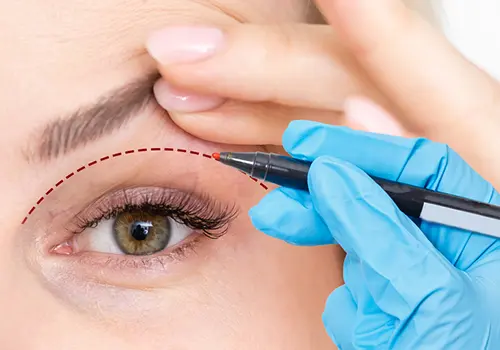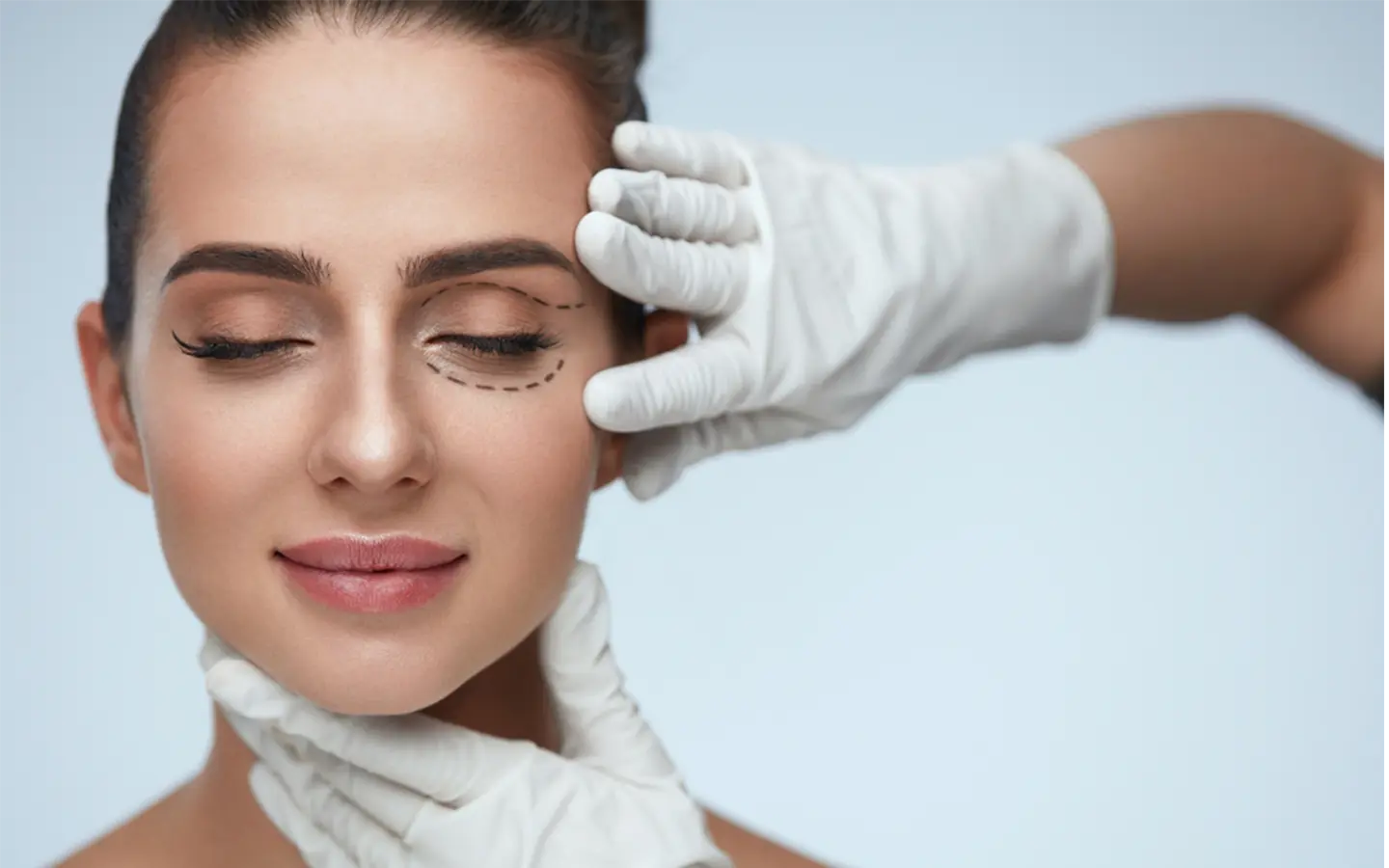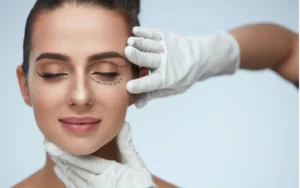Blepharoplasty (eyelid surgery) is a viable option for individuals seeking to renew their appearance and address concerns connected to aging around the eyes. The several choices for treating the upper and lower eyelids are examined in this in-depth guide. Dr. Maadico offers blepharoplasty in Iran, which is a flexible way to address practical concerns and seem more youthful and self-assured. Blepharoplasty can help you achieve your goals, whether they be to reduce puffiness, and wrinkles, or to improve the overall appearance of your eyes.
What is Eyelid Surgery?
Eyelid surgery, also known as blepharoplasty, is a surgical procedure aimed at enhancing the appearance of the upper and lower eyelids. It can be performed on one or both sets of eyelids and is designed to rejuvenate and provide a more youthful look to the eyes.
This procedure can also address functional issues related to the eyelids, improving both vision and appearance. Blepharoplasty is tailored to individual needs, whether to address wrinkles and puffiness on the lower eyelids or correct sagging upper eyelids that may obstruct vision. While primarily a cosmetic procedure, it also offers functional benefits, making it a comprehensive approach to enhancing the eyes’ aesthetics and functionality.
Types of Eyelid Surgery
Upper and lower eyelid surgery are the two primary sub types of eyelid surgery. These operations address many functional and cosmetic issues.
Upper Eyelid Surgery
Rejuvenating the upper eyelids is the main goal of upper eyelid surgery. It deals with problems like drooping eyes, extra fat, and sagging skin. You might look more awake and lively with this technique, which can give your eyes a younger expression. The steps of this surgery after applying anesthesia are as follows:
- Incision: Carefully cut along the upper eyelid’s natural crease.
- Tissue Adjustment: Tighten the underlying tissues and, if necessary, remove extra skin and fat.
- Repositioning or tightening muscle
- Closure: To reduce scarring, precisely sew the incision closed with tiny sutures.
- Dressing: For protection, use a thin layer of dressing or ointment.
- Recovery: To guarantee appropriate healing and attain the intended cosmetic result, adhere to the post-operative care guidelines.

Lower Eyelid Surgery
Conversely, lower eyelid surgery focuses on the lower eyelids. It attempts to make your eyes look younger and more rested by minimizing puffiness, wrinkles, and sagging skin. The indications of aging can be effectively reversed using this technique. The steps of this surgery after applying anesthesia are as follows:
- Making incisions inside the lower eyelid (transconjunctival) or just below the lower lash line
- Tissue Adjustment: Reposition or remove extra fat, and tighten muscles and loose skin.
- Closure: After transconjunctival surgery, stitch small incisions shut or let them heal naturally.
- Dressing: If necessary, use a thin dressing or ointment to provide protection.
- Recovery: To promote appropriate healing and attain the intended cosmetic result, adhere to the post-operative care guidelines.
The good candidate
- Whether upper or lower eyelid, those who are disturbed by extra skin, puffiness, or wrinkles around their eyes that give the appearance of being tired or old are usually good candidates for eyelid surgery.
- They should have reasonable expectations for the operation and be in generally good condition.
- Those looking to remove age symptoms, enhance the appearance of their faces, or address functional issues like drooping eyelids obstructing vision are frequently ideal candidates.
It is imperative to seek advice from a board-certified plastic surgeon in order to assess each patient’s appropriateness and customize the procedure to meet their unique objectives.
The Process: What to Expect
Understanding the surgical procedure and the anticipated recovery period is crucial before undergoing eyelid surgery. This knowledge gives you the ability to control reasonable expectations and make well-informed decisions, which guarantees a confident and organized travel.
1.Consultation
An eye exam is performed to determine the general health of the eyes during a pre-eyelid surgery consultation, and visual field testing is used to identify potential visual obstructions. Eyelid photography is utilized to record the state of the eyelid and direct the surgical technique, guaranteeing an accurate and customized operation.
2.Day of Surgery
- You will be given anesthesia on the day of the treatment. The surgical specialist will meticulously create incisions in the predetermined locations, which are cleverly concealed inside the organic curves of your eyelids.
- Usually, incisions for upper eyelid surgery are done in the folds of the upper eyelids. Depending on the technique used, incisions for lower eyelid surgery might be hidden either inside the lower eyelid or just below the lash line.
- To make the eyelids appear more youthful and lively, the surgeon will remove extra skin, fat, and tissue. Sutures will be carefully used to seal the incisions after any necessary corrections have been made.

3.Do’s and Don’t s After Eyelid Surgery
Do’s:
- Observe Post-Op Instructions: Comply with your surgeon’s instructions on prescription drugs, wound maintenance, and activity limitations.
- Rest: To speed up the healing process.
- Use Cold Compresses: To lessen swelling, apply cold compresses as directed.
- Remain Hydrated: To stay hydrated and aid in the healing process, consume water.
- Protect Eyes: To protect your eyes from UV rays, stay out of the sun and use sunglasses.
- keep your head raised higher than your chest when sleeping, For a few days after surgery.
Don’t s:
- Avoid Intense Exercise: To minimize strain on the surgery site, abstain from intense exercise and heavy lifting.
- Don’t Rub Your Eyes: To avoid causing irritability or harm, refrain from touching or rubbing your eyes.
- Limit Screen Time: Cut back on screen time to avoid dry eyes and eye strain.
- Ignore Eye Makeup: To avoid infection, wait to apply eye makeup until your surgeon gives the all-clear.
- Avoid Alcohol and Smoking: These two habits might hinder the healing process and raise the possibility of problems.
- Don’t Rush Your Recoveries: Since everyone heals differently, exercise patience and give yourself enough time to recuperate.
The Advantages of Surgery for Eyelids
eyelid surgery improves looks and quality of life in general. This adaptable technique is a popular option for people looking for a complete makeover because it offers both functional and aesthetic benefits.
- Better Aesthetics: Blepharoplasty can significantly improve the appearance of eyes. Your eyes will appear more awake, youthful, and brilliant by treating problems including puffiness, wrinkles, and sagging skin.
- Increased Self-Confidence: Not only can a revitalized eye area improve your physical look, but it may also greatly increase your confidence and sense of self-worth. Having greater satisfaction with your appearance can have a good effect on many areas of your life.
- Better eyesight: This surgery can improve eyesight and everyday functioning for people whose drooping eyelids are obstructing their field of vision.
- Long-Lasting Outcomes: Because the process usually yields long-lasting benefits, it’s a financially sensible investment in your appearance. You can benefit for many years to come with the right upkeep and care.
- Quick Recovery: The healing period following eyelid surgery is rather short. This implies that you won’t need to take a long time off to enjoy your eyes’ refreshed and younger-looking appearance. For individuals looking for a quick and dramatic improvement, eyelid surgery is an appealing option due to its short recovery period and long-lasting effects.

Risks and Complications
Like any surgical treatment, eyelid surgery has possible risks and complications. Among these dangers could be:
- Infection: At the surgical site, infections can happen, however they are uncommon.
- Bleeding: During or after the surgery, excessive bleeding may occur.
- Scarring: Especially in cases of exterior incisions, scars might differ in size and appearance.
- Asymmetry: It can be difficult to achieve exact symmetry, and there may be minute variations in the look of the eyes.
- Dry Eyes: Discomfort and dry eyes may result from a brief interruption in tear production.
- Vision Changes (Rare): Patients may very rarely have transient vision problems, such as trouble focusing or seeing double.
- Hematoma: A hematoma is a collection of blood under the skin that can happen.
- Numbness: There may be a brief period of temporary numbness or altered feeling in the eyelids.
- Functional Problems: Eyelid surgery may occasionally result in functional issues such as trouble closing the eyes completely.
To reduce the possibility of difficulties, it is crucial to go over these risks with your surgeon at the consultation and to carefully adhere to their pre- and post-operative instructions.
Conclusion
Blepharoplasty, often known as eyelid surgery, is a wonderful technique that can change the appearance and functionality of your eyes. This surgical option offers many advantages whether you’re interested in lower eyelid surgery, upper eyelid surgery, or both. You can have long-lasting effects and a quick recovery by selecting a board-certified plastic surgeon and following recommendations for aftercare. For a safe and successful eye surgery, Dr. Maadico is the expert you can trust for consultation.
If you’re ready for a change, request a free consultation.
You may also be interested in knowing about:
FAQ
- Is surgery on the eyelids simply done for aesthetics?
No, eyelid surgery has practical as well as cosmetic benefits. It can improve the appearance of your eyes, but it can also solve practical problems like drooping eyelids that block eyesight. Many people choose eyelid surgery as a way to enhance their quality of life.
- What is the duration of eyelid surgery results?
Surgery on the eyelids has permanent effects. Although they can’t stop the aging process that happens naturally, they can make you look younger and the results can last for years.

- Are there any dangers connected to surgery on the eyelids?
Surgical procedures often include certain inherent hazards. These could include anesthesia-related side effects, scarring, and infection. However, the dangers are reduced when the procedure is carried out by a qualified and experienced surgeon.
- Can I get surgery on both my upper and lower eyelids simultaneously?
It is feasible to do surgery on both the upper and lower eyelids in the same session. This method can produce a harmonious balance between the upper and lower lids and offer a complete renewal of the eyes.
- Will I appear significantly different after having eyelid surgery?
The goal of eyelid surgery is to bring out your inherent attractiveness and give you a more youthful appearance. Rather than being drastically different, the outcomes should be refreshingly subtle, leaving you looking like yourself but with greater energy.
- Is eyelid surgery in Iran safe and cost-effective?
Yes, it is safe and incredibly inexpensive to have eyelid surgery in Iran. Renowned plastic surgery Service Provider (Dr. Maadico) provides exceptional services at a reasonable price, making it a great option for people looking for dependable and affordable eyelid surgery.


